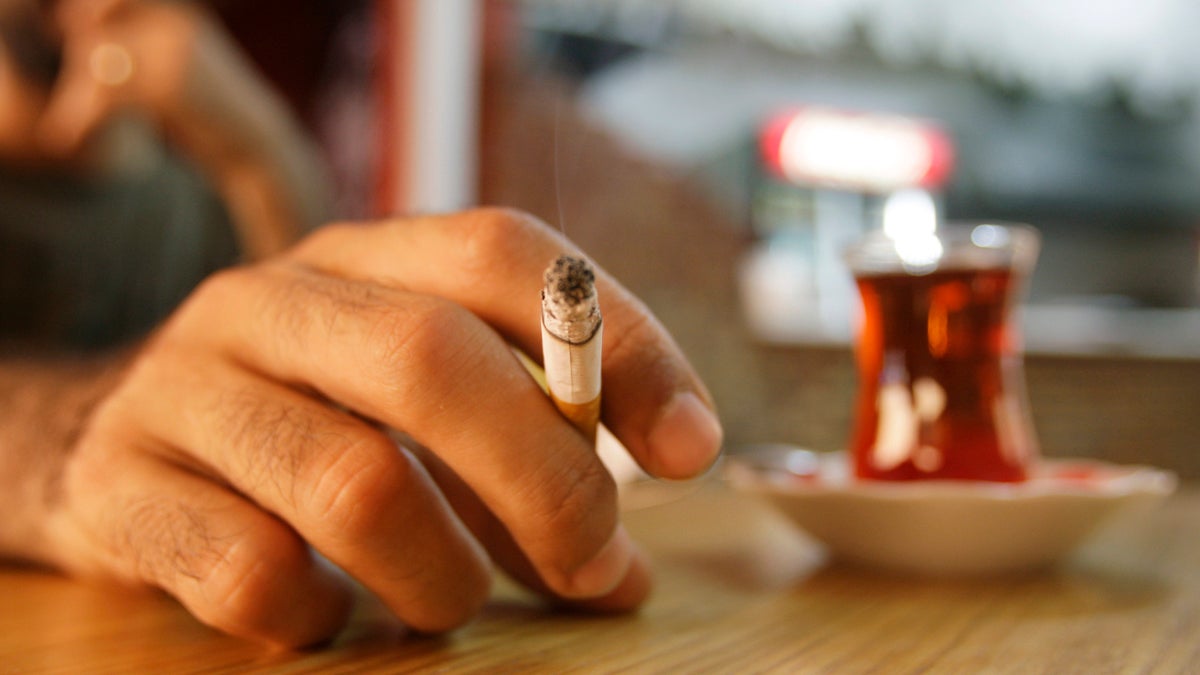Strategies to stop smoking focus on concern for kids, monitoring tobacco use

(AP file photo)
In some Philadelphia neighborhoods, 25 to 40 percent of residents smoke — and in many cities the highest smoking rates are in the poorest sections of town.
In recent years, the Philadelphia Department of Health has stepped up efforts to protect nonsmokers from the unhealthy habit of others.
“There’s no safe level of secondhand smoke,” said Temple University’s Bradley Collins, director of the school’s Health Behavior Research Clinic.
“Secondhand smoke has been associated or linked to numerous health consequences and is considered one of the leading preventable causes of illness and death particular in children,” said Collins.
A guest on WHYY’s “Radio Times” Monday, Collins spoke with host Marty Moss-Coane.
Asthma, heart disease, cancer and sudden infant death syndrome are just some of the conditions associated with secondhand smoke. Collins says talking with parents about those risks for kids can help motivate moms and dads to quit.
Asking smokers to count up the number of times they light up and closely monitor their tobacco use is another effective stop-smoking strategy.
Collins said health providers want smokers to notice the triggers and cues that lead them to reach for cigarettes. After tracking that information, health providers and patients look for alternative ways to curb nicotine urges.
WHYY is your source for fact-based, in-depth journalism and information. As a nonprofit organization, we rely on financial support from readers like you. Please give today.

